As marketers, we want to learn all we can about our prospects and customers – who they are and what motivates them – so we can develop solutions and marketing approaches that will really engage them. We hold focus groups, develop buyer personas, conduct surveys, and track anecdotal reports from sales … all to find out what the hot buttons are, what prospects feel most strongly about, and to discover the best ways to persuade them.
Neuromarketing – using sophisticated tools that measure brain activity and physiological responses – takes this kind of research to the next level.
So far more widely adopted in the B2C world, neuromarketing offers a way to literally dive into the minds of your audiences, and uncover responses that they themselves may not even be aware of. The findings, of course, can be used to enhance everything from product packaging to the placement of different elements on a web page.
Some of the responses measured by these advanced neuromarketing technologies may not even register consciously with the person who is being studied.
The technology used in neuromarketing includes FMRI (Functional Magnetic Resonance Imaging, which measures activity in different areas of the brain), EEG (electroencephalography, which measures brain waves), and biometrics (measuring eye and face movements). The goal is to map a respondent’s positive or negative reaction to a product, website, ad, etc. This offers a lot more precision than a question asked in a focus group, as some of the responses measured by these advanced technologies may not even register consciously with the person who is being studied.
“If you know what clicks with the brain, you can apply that knowledge to a better customer experience," says Dr. Terry Wu, a US-based expert in neuroscience. In his 2019 TEDx talk, “Neuromarketing: The new science of consumer decisions,” Dr. Wu outlines how companies like Google and Amazon use neuroscience to enhance the user experience – and boost sales and engagement. Google, for example, tested 50 shades of blue before choosing the shade that is currently used to highlight the clickable links on its search pages. Amazon increased the speed of its website by 1/10th of a second – an increase that is too subtle for our brains to pick up on, but that increased Amazon’s sales by $1.7 billion USD all the same.
Neuromarketing is a need-to-know skill for marketers by 2025
It’s easy to see the value of neuromarketing for B2C. But what are the implications for marketers in B2B? Well, all marketing, whether it’s B2C or B2B, is directed at people. Whether you’re part of a large purchasing group, or an individual buying a snack, emotion and engagement play a role in your decisions. And as the Google and Amazon examples show, improving the user experience in very small ways can reap big dividends. It’s anticipated that the role of neuromarketing in B2B will explode over the next couple of years. A recent study by Marketo on marketing trends forecasts that neuromarketing, ranked as need-to-know marketing skill, will expand from an 8% niche today to 52% by 2025. (Marketo lists it in second place, right after the top need-to-know skill for marketers in 2025: artificial intelligence/machine learning).
Of course, the technology used in neuromarketing isn’t cheap. The cost for an FMRI machine is in the millions, and even an EEG machine will run in the tens of thousands. Eye tracking devices are the least expensive. For now, organizations that are using neuromarketing tend to partner with specialist consultant companies, rather than set up in-house and invest in their own equipment.
The next frontier for neuromarketing will be to go beyond measuring brain activity, and start actively manipulating the brain and behavior.
While the ethical implications of this have yet to be worked out, the technology is there – scientists are already exploring all sorts of ways to manipulate behavior, such as hormone manipulation (it turns out that testosterone applications make us want luxury products), “sleep nudging” (exposing us to certain smells during deep sleep can help us change behaviors like quitting smoking), and temporary neural inhibition (which uses transcranial magnetic stimulation to temporarily knock out certain brain cells, and unleash certain behaviors).
As B2B marketing evolves, we’re evolving right along with it, incorporating the latest insights into the marketing approaches we develop for our customers
References
- Terry Wu, PhD., TEDx Talk, “Neuromarketing: The new science of consumer decisions,” June 2019. Retrieved from: https://www.youtube.com/watch?v=UEtE-el6KKs
- Eben Harrell, “Neuromarketing: What You Need to Know,” Harvard Business Review, Jan. 23, 2019, retrieved from: https://hbr.org/2019/01/neuromarketing-what-you-need-to-know
- “Marketing 2025: The future of skills and technology in marketing across Australia and New Zealand,” Marketo, retrieved from: https://engage.marketo.com/Marketing-2025.html



